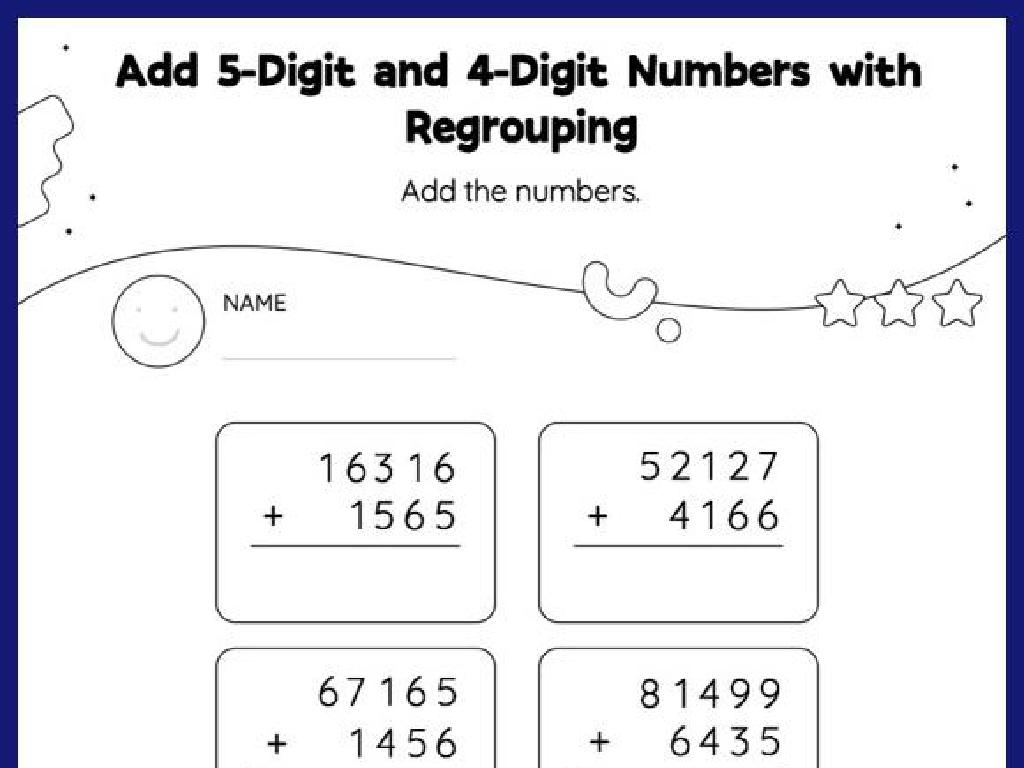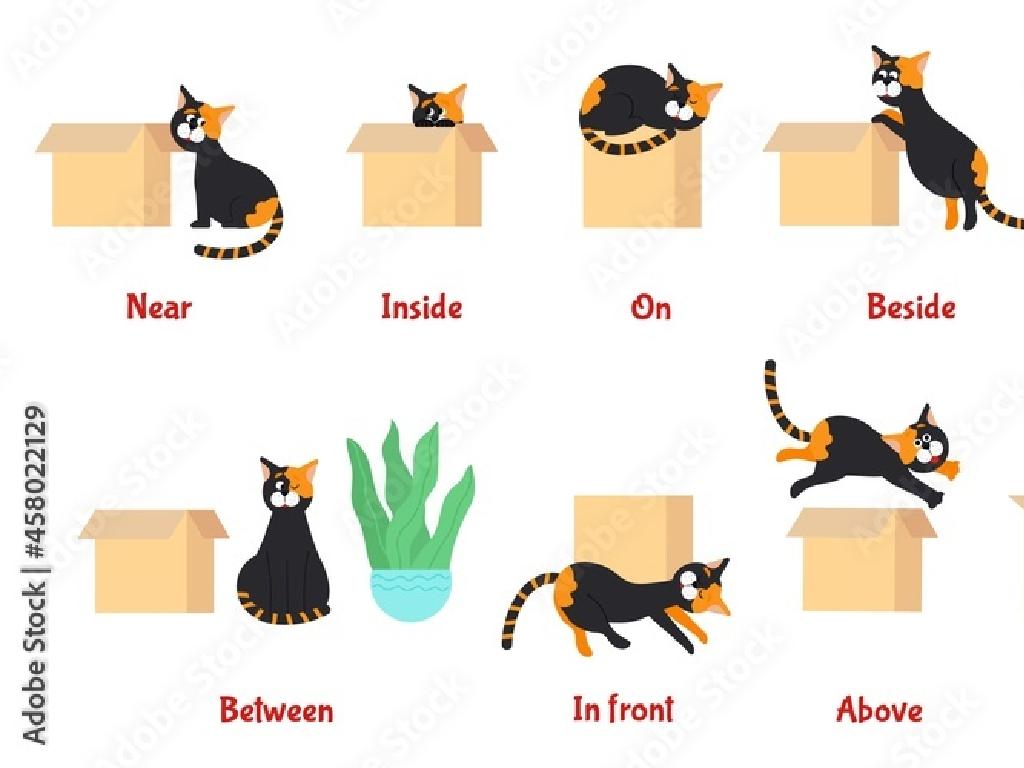Identify State Capitals Of The Northeast
Subject: Social studies
Grade: Fifth grade
Topic: State Capitals
Please LOG IN to download the presentation. Access is available to registered users only.
View More Content
Exploring State Capitals: The Northeast
– What are state capitals?
– Capitals are cities where government buildings are located.
– Importance of state capitals
– They host important historical and civic events.
– Examples from the Northeast
– Harrisburg, PA; Albany, NY; Boston, MA
– Fun facts about capitals
– Did you know? Montpelier, VT is the least populous state capital.
|
This slide introduces the concept of state capitals, focusing on the Northeast region of the United States. Begin by explaining that a state capital is where the main government offices and officials work. Emphasize the significance of state capitals as centers for state-level legislative and administrative activities. Provide examples of Northeast state capitals, such as Harrisburg, Albany, and Boston, to give students concrete references. Engage the class with fun facts, like Montpelier being the smallest capital by population, to spark interest. Encourage students to think about what makes these capitals unique and why they might be located where they are. This will set the stage for further exploration of each capital’s history and its role in the state’s governance.
Exploring State Capitals in the Northeast
– What is a state capital?
– It’s the city where a state’s government is based.
– Roles of a state capital
– A place for lawmaking and governance.
– Functions of a state capital
– Hosting the governor’s office and state legislature.
– Northeast state capitals
– Examples: Albany in New York, Boston in Massachusetts.
|
This slide introduces the concept of a state capital to the students, explaining that it is the city where the government of a state is located and where important decisions are made. It’s essential to discuss the roles and functions, such as being the location for the state’s legislature and governor’s office. Provide examples of state capitals from the Northeast to give students a geographical context. Encourage students to think about what makes these cities important and how they connect to the rest of the state. This will set the foundation for understanding the significance of state capitals in the governance and identity of each state.
Exploring the Northeast Region
– States in the Northeast
– Includes Maine, New York, New Jersey, and more
– Characteristics of the region
– Known for its rich history and diverse seasons
– Quick facts about the Northeast
– Home to the nation’s largest city, New York City
|
This slide introduces the Northeast region of the United States, which is composed of several states including Maine, New York, and New Jersey among others. Highlight the region’s unique characteristics such as its significant historical landmarks, varied climate with four distinct seasons, and its economic importance. Share quick facts like the presence of New York City, the largest city in the country, and the region’s role in the founding of the United States. Encourage students to think about what makes the Northeast different from other regions they have learned about, and how the geography and climate can influence the lifestyle and culture of the people living there.
State Capitals of the Northeast
– List of Northeast state capitals
– Capitals include Boston, Providence, and more
– Locate capitals on the map
– Use a map to find each capital in the Northeast
– Fun facts about each capital
– Did you know Harrisburg has a huge farm show?
– Understanding the geography
– Learn how capitals are often central to state history
|
This slide aims to familiarize students with the state capitals of the Northeast region of the United States. Start by presenting a list of the capitals, ensuring to pronounce each one clearly. Next, show a map of the Northeast and have students locate each capital. This visual aid helps in understanding the geographical layout. Share a fun fact about each capital to make the learning process engaging; for example, mention that Montpelier is the least populous state capital in the U.S. Discuss how these capitals often play a significant role in the state’s history and culture. Encourage students to share any prior knowledge or personal experiences related to these capitals.
Remembering the Capitals: Memorization Techniques
– Techniques to memorize capitals
– Use songs, stories, and games to remember capitals
– Create associations for recall
– Link capitals to familiar places, people, or things
– Practice with mnemonic devices
– Mnemonics like ‘Harrisburg is Hairy’ help recall
– Review and repetition
– Consistent review locks in the memory of capitals
|
This slide aims to equip students with effective strategies for memorizing the state capitals of the Northeast. Introduce various techniques such as using songs, stories, or games that can make memorization fun and engaging. Encourage students to create personal associations with things they already know to help recall the capitals more easily. Introduce mnemonic devices as a powerful tool to aid memory. For example, associating ‘Harrisburg’ with something ‘hairy’ to remember the capital of Pennsylvania. Emphasize the importance of review and repetition in committing these capitals to long-term memory. Plan for interactive activities where students can practice these techniques and share their own mnemonic devices.
Let’s Play a Matching Game!
– Match states with their capitals
– Pair up for the activity
– Discuss memory strategies
– Did rhymes or visuals help?
– Share what you’ve learned
– Each pair presents their findings
|
This interactive slide is designed for a classroom activity where students will work in pairs to match Northeastern states with their respective capitals. Provide students with a list of states and capitals on separate cards and ask them to find the correct pairs. After the activity, facilitate a discussion on the strategies students used to remember the information, such as mnemonic devices, rhymes, or associating capitals with particular characteristics of the state. Encourage them to share their strategies with the class to help others. This activity not only reinforces their knowledge of state capitals but also develops their memory skills and ability to work collaboratively.
Class Activity: State Capital Bingo
– Receive your State Capital Bingo card
– Listen as states are called out
– Mark the capital on your card
– If you hear ‘Maine’, look for ‘Augusta’ and mark it
– Aim for five in a row to win!
|
This interactive class activity is designed to help students learn the state capitals of the Northeast in a fun and engaging way. Each student will receive a Bingo card with various state capitals on it. As the teacher calls out the names of states, students will mark the corresponding capital if it appears on their card. The goal is to get five capitals in a row, either horizontally, vertically, or diagonally. The first student to achieve this shouts ‘Bingo!’ and wins. Teachers should prepare Bingo cards in advance, ensure each card is unique, and have a list of Northeast state capitals to call from. Possible variations of the game could include blackout Bingo, where students must fill their entire card, or four corners Bingo, where students aim to mark the capitals in the four corners of their card.
Wrapping Up: Northeast State Capitals
– Recap Northeast state capitals
– Quick quiz: Can you name them all?
– Importance of state capitals
– Capitals are key for state identity and governance
– Looking ahead: The Southeast
– Get ready to explore new capitals!
– Review activity
– Match states with capitals on a map
|
As we conclude today’s lesson, let’s review the state capitals we’ve learned in the Northeast region. Understanding these capitals helps us appreciate the identity and governance of each state. For homework, students should start looking at the Southeast region’s states and their capitals to prepare for our next class. Engage the class with a fun review activity where they match states to their capitals on a map, reinforcing their memory and making learning interactive.



/mla_works_cited_example.png)

